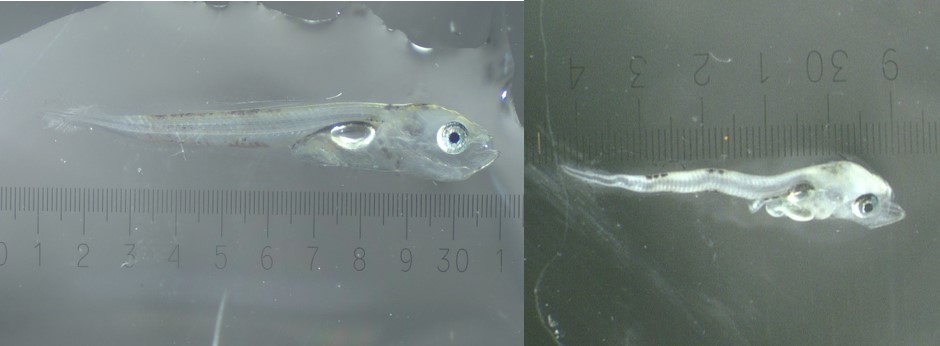The sorting and sampling of fish larvae is one of the main tasks on our research cruises. Every year we cover a specific grid of 45 stations in the Bornholm Basin and since last year we also sample 35 stations on a grid in the western Baltic Sea. On each of these stations, sampling consists of a plankton net which gets dragged through the water column from the surface to the seafloor and back, and a probe which measures important water values, in particular salinity, temperature and oxygen, from the surface to the seafloor. Although we are interested in larvae of all fish species, cod larvae are our main target in these sorting sessions and we are happy about every single cod larva that we find in the samples. Both Baltic cod stocks are unfortunately in decline, and have severe recruitment problems (too little offspring that survives to replenish the population), but the causes are still unclear. With our sampling we trace the number of cod offspring to try to shed light into the topic.

The comparison between the two different grids (western Baltic and Bornholm Basin) in terms of cod spawning season is always fascinating. While the cod larvae in the western Baltic Sea around Fehmarn and the Kiel Bight are abundant right now in April and already large, the discovery of a cod larva in the Bornholm Basin is rare and if any larvae are found, they are small. This is because the two distinct cod stocks of the Baltic Sea have different spawning seasons. While the cod in the western Baltic already spawns in February and March, the eastern Baltic cod just starts spawning now in April.

Multiple other interesting larvae can be found in the plankton samples. Some of them look as if they had lips, for example the snailfish, while others have a beautiful pattern on their body like, such as the hooknose. A surprise may await every time when we are sorting the plankton samples and everyone is excited to see what comes up in the sorting dish. This examination of different fish larvae is important to develop a time series for example of abundances in every year. Some of the larvae get preserved in small vials for further analysis in the lab on land to investigate condition (a sort of body mass index for fish), the exact age or the diet. With these data as indicators, a potential forecast and performance of a fish stock is possible. The grids for 2023 are done but we are already excited to come back to sample next year.
By Anton Höper (scientific crew AL592)

